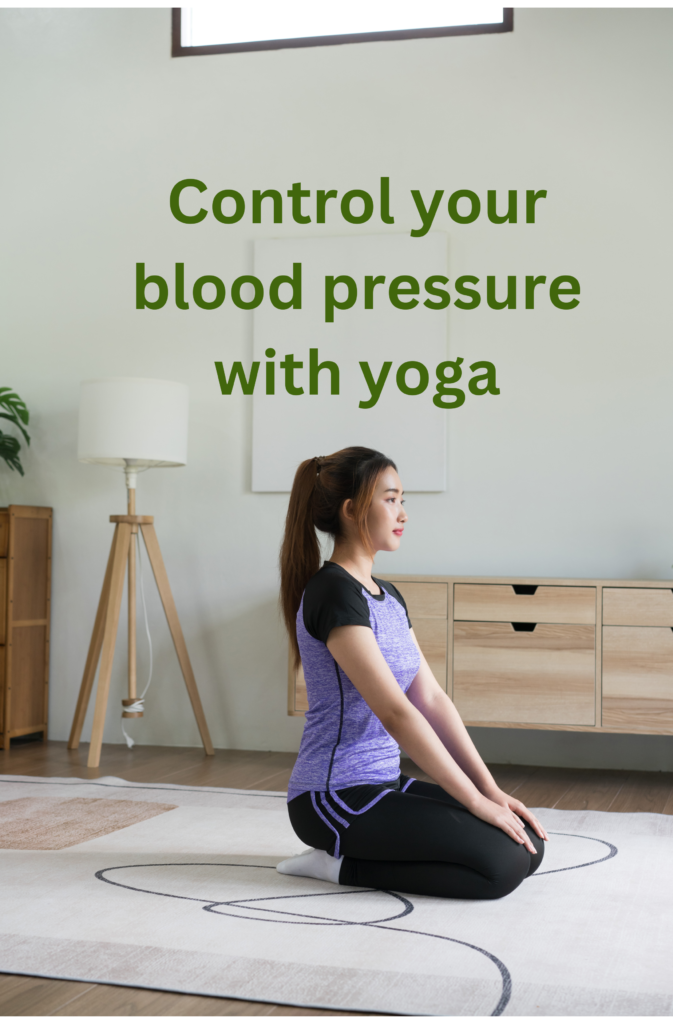Introduction: The Silent Battle Within
In the fast-paced rhythm of modern life, the silent battle of managing blood pressure often takes a toll on our well-being. This article explores a natural and holistic approach to this common struggle—controlling blood pressure with yoga poses.
Understanding the Blood Pressure Puzzle
High blood pressure, or hypertension, is a widespread health concern with potentially severe consequences. Before diving into the yoga solutions, let’s unravel the complexities of blood pressure, its impact on health, and why a holistic approach is essential.
Controlling Blood Pressure with Yoga Poses
1. Mountain Pose (Tadasana):
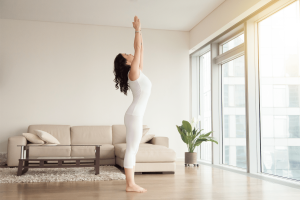
Description: Stand tall with feet together, arms by your sides. Engage your muscles, lift your chest, and reach your arms overhead.
Benefits: Improves posture, strengthens thighs and ankles, and promotes awareness of body alignment.
2. Downward-Facing Dog (Adho Mukha Svanasana):
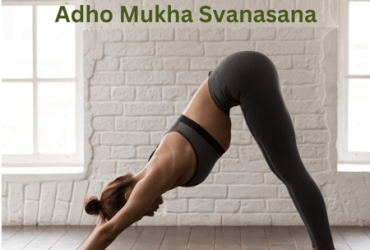
Description: Start on hands and knees, lift hips toward the ceiling, forming an inverted V shape. Hands shoulder-width apart, feet hip-width apart.
Benefits: Stretches the entire body, strengthens arms and legs, and improves circulation.
3. Child's Pose (Balasana):
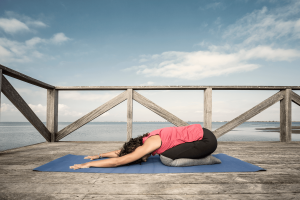
Description: Kneel, sit back on your heels, and reach arms forward with forehead resting on the mat.
Benefits: Relaxes the spine, stretches hips, thighs, and ankles, and calms the mind.
4. Tree Pose (Vrikshasana):
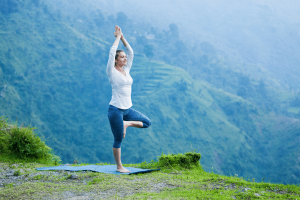
Description: Stand on one leg, place the sole of the other foot on the inner thigh or calf, hands in prayer position.
Benefits: Improves balance, strengthens thighs and calves, and promotes focus and concentration.
5. Bridge Pose (Setu Bandhasana):
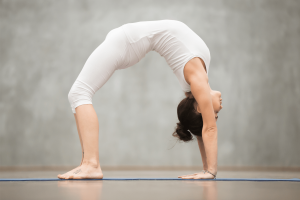
Description: Lie on your back, bend knees, lift hips towards the ceiling, and clasp hands beneath your back.
Benefits: Strengthens the back, buttocks, and thighs, and opens the chest.
6. Corpse Pose (Savasana)
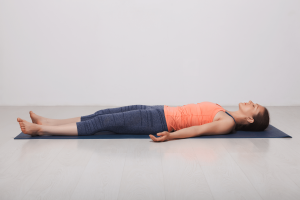
Description: Lie on your back, arms by your sides, legs extended. Close your eyes and focus on your breath.
Benefits: Promotes deep relaxation, reduces stress, and allows the body to absorb the benefits of the practice.
7. Cat-Cow Pose (Marjaryasana-Bitilasana):
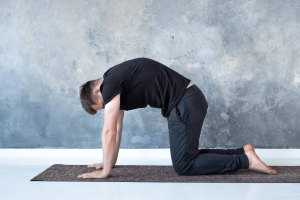
Description: On hands and knees, arch your back (cow) and then round it (cat), moving between the two positions.
Benefits: Enhances spinal flexibility, massages abdominal organs, and improves posture.
8. Seated Forward Bend (Paschimottanasana):

Description: Sit with legs extended, hinge at your hips to reach forward. Hold onto your feet or shins.
Benefits: Stretches the spine, hamstrings, and shoulders, and calms the nervous system.
9. Cobra Pose (Bhujangasana):
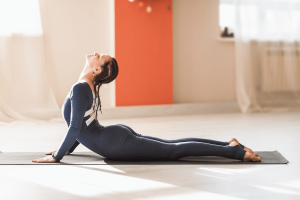
Description: Lie on your stomach, hands under shoulders, lift your chest while keeping the lower body on the mat.
Benefits: Strengthens the back muscles, opens the chest, and improves posture.
10. Fish Pose (Matsyasana):
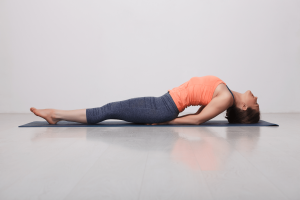
Description: Lie on your back, lift your chest, and arch your back, supporting your weight on your forearms.
Benefits: Stretches the chest and neck, strengthens the upper back, and stimulates the thyroid.
11. Plank Pose:
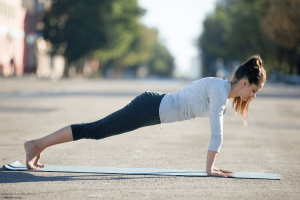
Description: Start in a push-up position, arms straight, body in a straight line from head to heels.
Benefits: Strengthens the core, arms, and shoulders, and improves overall body strength.
12. Upward-Facing Dog (Urdhva Mukha Svanasana):
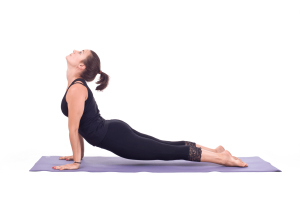
Description: From a prone position, lift your chest and upper body, keeping your hands on the mat.
Benefits: Strengthens the spine, arms, and wrists, and opens the chest and lungs.
13. Legs Up the Wall (Viparita Karani):

Description: Lie on your back with legs against a wall, forming an L shape.
Benefits: Promotes relaxation, reduces swelling in the legs, and improves circulation.
Incorporating Yoga into Daily Life
Building a Consistent Practice
Discover practical tips for incorporating yoga into daily routines, emphasizing consistency as a key factor in reaping the long-term benefits for blood pressure management.
Creating a Serene Space
Learn how to establish a dedicated yoga space at home, enhancing the therapeutic effects of the practice and contributing to stress reduction.
The Power of Mindfulness
Stress Reduction and Emotional Well-being
Delve into the ways in which mindfulness, cultivated through yoga, contributes to stress reduction and emotional well-being, ultimately impacting blood pressure.
Conclusion: Embracing a Holistic Journey
In conclusion, the path to controlling blood pressure through yoga poses is a holistic journey that encompasses the mind, body, and spirit. As we weave these ancient practices into our modern lives, we unlock the potential for lasting well-being.
Frequently Asked Questions
- Can yoga alone replace medication for high blood pressure?
While yoga can be a valuable complementary practice, it’s crucial to consult with a healthcare professional regarding medication and treatment plans.
- How frequently should one practice yoga for blood pressure control?
Consistency is key. Aim for at least 3-4 sessions per week, adapting the practice to your comfort and schedule.
- Are there specific poses to avoid for individuals with hypertension?
Individuals with high blood pressure should avoid intense inversions and poses that involve breath retention. Always consult with a yoga instructor or healthcare provider for personalized advice.
- Can beginners with no yoga experience start practicing for blood pressure control?
Absolutely. Beginners can start with gentle poses and gradually progress. It’s advisable to attend beginner-friendly classes or follow online tutorials for guidance.
- How long does it take to see the effects of yoga on blood pressure?
Individual responses vary, but consistent practice may yield noticeable effects within a few weeks to a few months. Monitor your progress and consult with a healthcare professional as needed.
Unlock the gateway to holistic well-being through yoga and take charge of your blood pressure journey. Begin your transformative practice today.
Get Access Now: https://bit.ly/J_Umma

